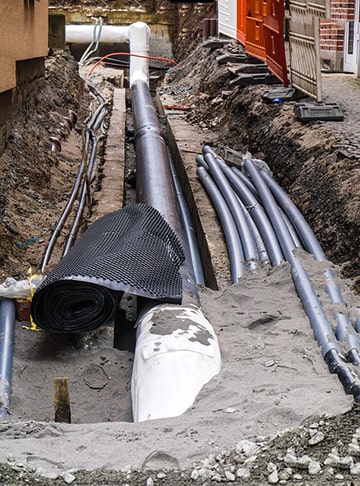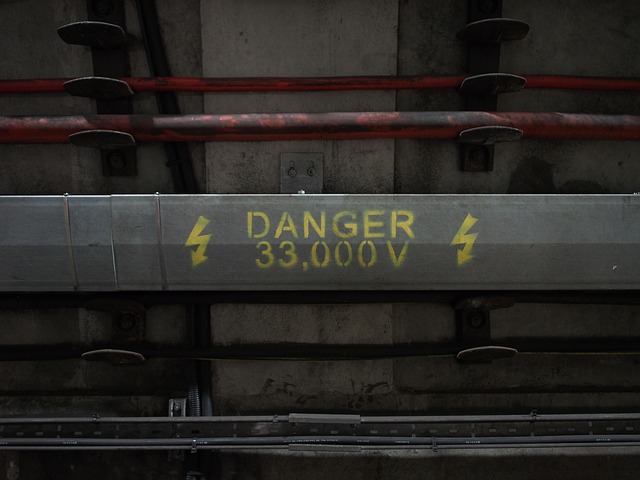Underground Distribution Systems
Energy is an integral part of our lives. Power distribution influences a local infrastructure that determines the quality of the power supplied. Given the fundamental principles of electric power, the performance of the supply network is an important element in our quality of life. Growing urbanization is leading to a surge in the density of power supply systems.
Avoiding urban development areas while building a power distribution line is critical since it can generate construction issues. That is why, in cases where the networks were mainly developed overhead, the question of moving them underground arises. In addition, because trees must be cut down during the construction of the power line to maintain the necessary clearance, this will have an impact on the biodiversity of the region. As a result, it is far better to avoid densely forested areas throughout the survey and design stages. If this is not possible, the underground power lines will become a solution.
The authorities of industrialized countries seek to reduce the influence of the energy distribution system on the landscape, to make power lines less visible or completely out of sight. For this purpose, it is better to transfer them underground. Such systems are more costly than conventional ones and the governments have to stimulate their building by different rules and regulations.
So what do such systems embrace? The configuration of an underground power system is usually standard and consists of cables, connectors, and fasteners.

Underground cables, in turn, have various components, such as a conductor, sheath, insulation system, and others. They can be of low voltage (up to 1000 V) but can reach as high as 132 kV.
Cables are placed underground at a depth from 0.8 m to 1 m, in ducts, or tunnels. The most economical is underground cable laying of up to six cables in one trench. It is allowed to lay not less than 20 cables in one tunnel. Due to numerous technical reasons, the length of underground cable lines does not exceed 12 km. Therefore, underground power lines are inherently localized and less common.
Analyzing their pros and cons, we, as a rule, compare them with overhead ones.
Advantages
Safety:
The underground cables are more reliable. Thus, the likelihood of a hazard probability is very low.
Less fault rate:
Due to a great number of insulation layers, the chances of malfunction in case of electrical damage are very low.
Appearance:
This is a major factor for underground power lines. In most developed cities and high-density residential areas, underground cables are widely used for a better appearance.
Exposure to environmental threats:
Weather plays an important role in the overall number of electrical system failures. According to some studies, 54% of all blackouts are the result of weather or ecological hazards. In the case of underground distribution systems, the likelihood of damage due to environmental hazards is much less.

Drawbacks
The main disadvantage of underground systems is their primary cost. For example, a 66 kV traditional transmission line costs 0.28 million dollars per mile, while its underground counterpart costs 1.5 million dollars per mile. The cost of laying and operating underground distribution cables is up to 10 times higher. It is for this reason, that 95% of all power distribution systems are overhead at the moment.
Another disadvantage is that underground cable repairs require more time and complex interventions. The operating life of the cable is 10 years approximately and the faults occur rarely, though, if they do, it is very difficult to find them in an underground power line. Thus, more non-destructive and non-invasive technologies are needed to detect faults. In addition, with time, the insulation can weaken, allowing air to enter it. Because the power is delivered at a high voltage level, the air inside becomes ionized, causing the insulation to fail. As a result, underground cables are only regarded suitable for distribution at voltage levels of up to 11 kV and lower.
In general, the trend towards the transition to underground distribution systems is growing steadily. For example, the UK has many active compensation programs for companies involved in underground electricity distribution systems. In Denmark, it has been planned that new and existing 132-150 kV lines should become underground by 2030.
However, according to the estimations of the French Alternative Energies and Atomic Energy Commission (CEA), underground system maintenance makes up 2% of system plant investments whereas the maintenance of overhead systems reaches 4%, or twice more.
As we can see, the incentive for the implementation of a new type of power distribution is in the interests of not only developers but also the state itself. Still, there are many issues to be considered before further transfer from an overhead to an underground system.
